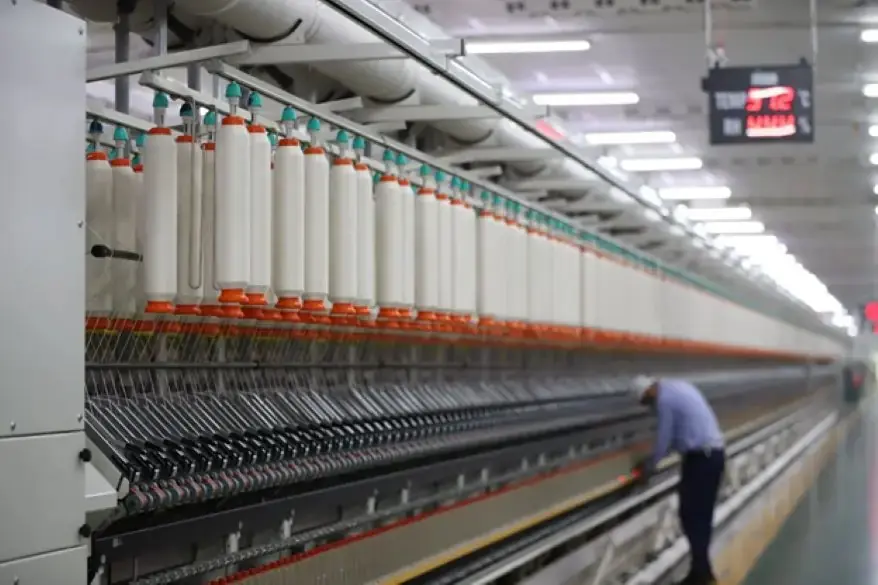Automation Across Sectors – Building Resilient Operations and Driving Productivity
Image Source
Modern businesses face constant pressure to improve efficiency, minimize risks, and keep up with market changes. Automation has become one of the most powerful tools for meeting these demands. Creating smarter systems that can handle complexity and adapt in real time has become crucial for businesses today.
Industries ranging from manufacturing to logistics and healthcare are leveraging automation to streamline workflows, increase accuracy, and support teams with tools that reduce repetitive tasks. As these technologies advance, organizations can build operations that are more productive and also more resilient against unexpected challenges.
Let’s explore more on this below:
Smart Systems to Streamline Operations
Adopting smart systems allows companies to simplify routine processes and gain better control over daily operations. Such advanced systems connect machinery, software, and data analytics into one platform, making it effortless to track performance and make adjustments as needed. Instead of relying on manual checks, businesses can use automated alerts and dashboards to stay ahead of potential issues.
In industries like manufacturing, process control software plays a crucial role in achieving this level of efficiency. It helps monitor production lines in real time, automatically adjusting parameters to maintain quality and prevent errors. For managers, this means fewer disruptions and a more predictable workflow, allowing teams to focus on tasks that require strategic thinking.
Digital Twins for Simulation and Improvement
Digital twins give businesses the ability to create virtual models of their physical systems. With these models, teams can run simulations to test process changes, identify weak points, and predict how adjustments will perform before applying them in the real world. In turn, this reduces the risk of downtime or costly mistakes when implementing updates.
A company managing a large logistics network, for example, could use digital twins to simulate route changes during peak seasons. This would help them optimize delivery times while avoiding bottlenecks, leading to smoother operations without experimenting on live systems.
RPA in Back-End Functions
Robotic Process Automation (RPA) helps organizations remove repetitive tasks from their teams’ workloads. Instead of staff manually entering data or processing invoices, bots can perform these steps quickly and accurately around the clock. This way, businesses can handle higher volumes without increasing labor costs.
In a healthcare setting, RPA might be used to manage patient appointment reminders, insurance verifications, and billing tasks. Automating these functions frees up staff to spend more time on patient care, improving both efficiency and service quality.
Hyperautomation to Link Business Functions
Hyperautomation brings multiple automation technologies together to create connected workflows across different departments. Rather than automating one task at a time, it builds end-to-end systems that can manage complex operations without constant supervision.
For example, a retailer could use hyperautomation to integrate inventory tracking, supply chain management, and customer order processing. When stock levels run low, the system could automatically reorder products, update availability online, and inform customers about delivery timelines, all without requiring separate manual steps for each department.
Human-Machine Collaboration for Complex Tasks
Combining human expertise with machine precision allows businesses to tackle complex tasks more effectively. While automation handles repetitive or highly technical processes, employees can focus on areas requiring creativity, problem-solving, and nuanced decision-making. This balance helps companies maximize productivity without sacrificing quality or flexibility.
For instance, in product design and engineering, machines can process massive data sets and run simulations, while human teams interpret results and innovate new solutions. This collaboration creates a workflow where technology amplifies human capabilities instead of replacing them.
AI Tools for Multi-Channel Coordination
Managing multiple channels, such as online platforms, customer service systems, and supply chains, can be overwhelming without the right tools. AI-powered solutions can synchronize these systems, offering real-time insights and triggering automatic responses to changes across any channel.
A business operating both physical stores and e-commerce can use AI tools to balance stock levels, route deliveries efficiently, and keep customers updated. Instead of managing each channel separately, a centralized system provides a cohesive approach to operations, saving time and reducing errors.
Self-Healing Systems for Uninterrupted Productivity
Self-healing systems detect issues in real time and fix them automatically to prevent downtime. These technologies are designed to recognize irregular patterns, apply corrective actions, and even alert teams when human intervention is needed.
In IT infrastructure, self-healing tools can restart failed processes, reroute data, or patch vulnerabilities before users experience disruptions. This approach creates a more resilient operation, especially in sectors where continuous service is critical.
Agile Automation to Handle Market Disruptions
Businesses face sudden market changes, from supply chain interruptions to demand spikes. Agile automation allows companies to adjust quickly by reconfiguring workflows and scaling operations in response to new conditions.
A manufacturer, for example, could adapt its production schedules automatically when suppliers face delays. With agile automation, the system redirects resources and updates timelines without requiring manual oversight for every adjustment. Ultimately, this keeps operations steady even under unpredictable circumstances.
Resilient Supply Chains with Autonomous Logistics
Autonomous logistics technologies, such as automated warehouses and self-driving delivery vehicles, are helping companies build supply chains that are less vulnerable to disruptions. These systems operate with minimal human input by using fundamental parts such as custom urethane wheels for automation, and can respond dynamically to changes in demand or transportation routes.
Using autonomous systems, a company can keep shipments moving even during labor shortages or weather-related delays. This capability strengthens the supply chain, ensuring customers receive products on time while reducing dependency on manual coordination.
Predicting Failures Using Machine Learning
Machine learning algorithms analyze historical and real-time data to predict equipment failures before they occur. As such, this allows businesses to plan maintenance proactively, avoiding costly breakdowns and unexpected downtime.
In sectors like energy and manufacturing, predictive systems alert teams when machinery performance starts to deviate from normal patterns. Teams can then schedule repairs during low-demand periods, keeping productivity high while extending the lifespan of equipment.
Energy Efficiency with Intelligent Systems
Automation is also driving sustainability by optimizing energy use across operations. Intelligent systems can adjust lighting, heating, and machinery based on occupancy and demand, reducing waste and cutting costs.
In commercial buildings, these systems monitor energy consumption and make real-time adjustments to stay within efficiency targets. For companies with large facilities, this approach not only lowers expenses but also supports broader environmental goals.
Automation has moved beyond being a convenience and has become a cornerstone of operational strategy for future-focused businesses. With technologies like smart systems, predictive analytics, and self-healing platforms, companies can design operations that adapt in real time to changing demands and unexpected challenges. To make the most of automation, organizations need to approach it as a partnership between technology and human expertise. When deployed strategically, automation empowers teams to focus on innovation and critical thinking while routine processes run seamlessly in the background.
Additionally, to stay updated with the latest developments in STEM research, visit ENTECH Online. Basically, this is our digital magazine for science, technology, engineering, and mathematics. Furthermore, at ENTECH Online, you’ll find a wealth of information.





